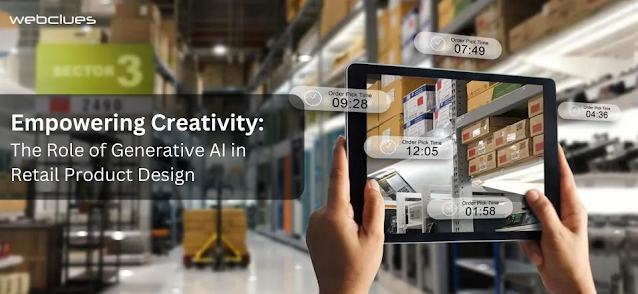In the ever-evolving landscape of retail, product design stands as a crucial element that not only defines a brand's identity but also shapes consumer experiences. The fusion of technology and creativity has given rise to new possibilities, with generative artificial intelligence (AI) emerging as a powerful tool in the hands of designers. This essay explores the transformative role of Generative AI in Retail product design, shedding light on how it empowers creativity and revolutionizes the way products are conceptualized, developed, and brought to market.
The Evolution of Retail Product Design:
Traditional product design processes often involve extensive research, manual ideation, and iterative prototyping. However, the fast-paced nature of the retail industry demands agility and innovation. Generative AI, a subset of artificial intelligence, has ushered in a paradigm shift by automating and enhancing various stages of the design process.
- Automated Ideation:
One of the primary contributions of generative AI to retail product design is its ability to automate ideation. AI algorithms can generate a myriad of design concepts by analyzing vast datasets of consumer preferences, market trends, and design aesthetics. This not only accelerates the ideation phase but also introduces designers to novel ideas and possibilities that may not have been apparent through traditional methods.
Generative algorithms consider numerous variables, from color palettes to material choices, enabling the creation of diverse design options. This democratization of ideation empowers designers to explore a spectrum of possibilities, fostering a culture of experimentation and innovation.
- Personalized Design:
The era of one-size-fits-all products is waning, and consumer preferences are increasingly leaning toward personalized experiences. Generative AI excels in this regard by leveraging data analytics to understand individual preferences and tailoring designs accordingly. By factoring in variables such as demographic information, purchase history, and social media interactions, AI algorithms can generate product variations that resonate with specific target audiences.
Personalized design not only enhances customer satisfaction but also drives brand loyalty. Consumers are more likely to connect with products that align with their unique tastes and preferences, and generative AI plays a pivotal role in making this customization scalable and efficient.
- Rapid Prototyping and Iteration:
The conventional process of prototyping and iterating can be time-consuming and resource-intensive. Generative AI expedites this phase by creating virtual prototypes based on initial design concepts. These digital models can be quickly refined, modified, and tested, allowing designers to explore different iterations rapidly.
This accelerated prototyping process reduces time-to-market, a critical factor in the fast-paced retail industry. It also facilitates a more agile approach to design, enabling designers to respond promptly to emerging trends or consumer feedback.
- Collaborative Design Ecosystems:
Generative AI fosters collaboration by providing a platform where designers, data scientists, and other stakeholders can collectively contribute to the design process. Cloud-based platforms equipped with generative AI algorithms allow real-time collaboration, breaking down geographical barriers and ensuring seamless communication.
This collaborative design ecosystem enhances the diversity of perspectives involved in the design process, leading to more well-rounded and innovative outcomes. It also promotes cross-disciplinary interactions, enriching the design process with insights from different fields.
Challenges and Ethical Considerations:
While integrating generative AI in retail product design brings about transformative benefits, it is not without challenges and ethical considerations. Privacy concerns arise when collecting and utilizing consumer data for personalized design, and there is a need for transparent and ethical practices to address these issues. Additionally, the potential bias in algorithms, if not carefully monitored, can result in designs that perpetuate stereotypes or exclude certain demographics.
Conclusion:
Generative AI is reshaping the landscape of retail product design by empowering creativity and introducing unprecedented efficiency. From automated ideation to personalized design and rapid prototyping, the contributions of AI in the design process are multifaceted. As this technology continues to evolve, it is imperative for designers, retailers, and technologists to collaborate in addressing challenges and ensuring that the ethical considerations of AI are prioritized.
The symbiotic relationship between human creativity and generative AI holds the key to unlocking new frontiers in retail product design. By embracing the capabilities of AI, designers can push the boundaries of innovation, creating products that not only meet but exceed the expectations of a diverse and dynamic consumer base. As we navigate the future of retail, the fusion of human ingenuity with the computational power of generative AI promises a landscape where creativity knows no bounds. Now as the industry evolves, Webclues Infotech is not just at the forefront, leveraging generative AI in retail but also remains committed to providing excellent generative AI solutions that enhance the retail design process, combining human skills and computer power to deliver the best solutions.


0 Comments